Bio-Molecules + Enzymes
1/58
Earn XP
Name | Mastery | Learn | Test | Matching | Spaced |
|---|
No study sessions yet.
59 Terms
Macromolecules
Large organic molecules made of monomer
Monomer
1 unit “building blocks”
Polymer
Multiple monomers chemically bonded.
Chemical Bonds
Where is energy stored?
Hydrolysis
Reaction that breaks apart a molecule and forms water. (Releases energy)
Dehydration Synthesis
Reaction that forms molecules with the removal of water. (Stores energy)
Organic Molecules
Has both carbon and hydrogen atoms linked together. (Main Elements, C-H)
Inorganic Molecules
Doesn’t have carbon AND hydrogen atoms linked together. (O=C=O)
Carbohydrates- Nickname
Carbs or Sugars
Carbohydrates
Composed of elements arranged in 1 carbon, 2 hydrogen, 1 oxygen.
Carbohydrates- Shape
Ring
Glucose
Main source of energy.
Monosaccharide
One ring (Ex. Glucose or Fructose)
Disaccharide Examples
Sucrose or Lactose
Polysaccharides
Two or more monosaccharides bonded together. (Ex. Starch, Cellulose, Chitin, Glycogen.
Lipids
Contain the elements C, H, and some O.
Building blocks of lipids
Glyceral & Fatty Acids
Lipids- Function
Long term energy source, makes up cell membranes, provide insulation.
What has twice as much energy and calories as carbs?
Lipids (Ex. Wax, Oils, Fats, Steroids, Phospholipids)
Nucleic Acids
Codes for and produces proteins
Nucleic Acid- Composition
Carbon, Hydrogen, Oxygen, Nitrogen, and Phosphorus. (C, H, O, N, P)
Nucleic Acid- Structure
Phosphate group, S-Carbon sugar, Nitrogenous base.
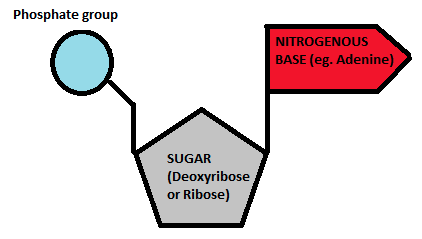
Which group is this building block for?
Nucleic Acids
What is used for long-term energy storage?
Lipids
What builds tissues like bone and muscle?
Proteins
What is a major part of cell membranes?
Lipids
What has a name that ends in "ose”?
Carbohydrates
What is made up of nucleotides?
Nucleic Acids
What forms antibodies that help you fight disease?
Proteins
What has a ratio of C, H, O, that is 1:2:1?
Carbohydrates
What includes enzymes that control reaction rates?
Proteins

What process is this?
Hydrolysis

What process is this?
Dehydration Synthesis
What is made up of mostly of C and H, with some O?
Lipids
What has monosaccharides as its monomer?
Carbohydrates
What is made up of C, H, O, N?
Proteins
What has the most energy per gram?
Lipids
What has an amino acid as its monomer?
Proteins
What stores genetic information?
Nucleic Acids
What is used as a source of quick energy?
Carbohydrates

What type of organic compound is this?
Carbohydrate

What would this be an example of?
Nucleic Acids
Which has starch, cellulose, and chitin as examples?
Carbohydrates
What has fatty acids as its monomer?
Lipids

What has building blocks like this?
Proteins

What organic compound is this?
Lipid
What has monomers made up of a sugar, a phosphate group, and a nitrogen base?
Nucleic Acids
What group do enzymes belong to?
Proteins

What building blocks like this?
Lipids

What macromolecules make up the majority of the cell membrane?
Lipids
What macromolecule is an enzyme?
Protein
How does an enzyme increase the rate of reaction?
It decreases the activation energy required to start the reaction.
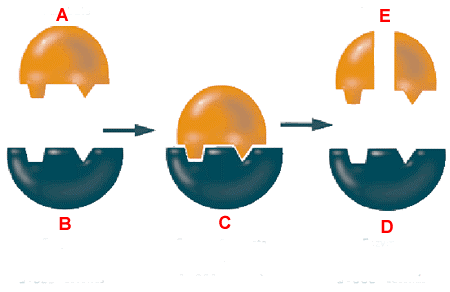
Identify Structure A
Substrate
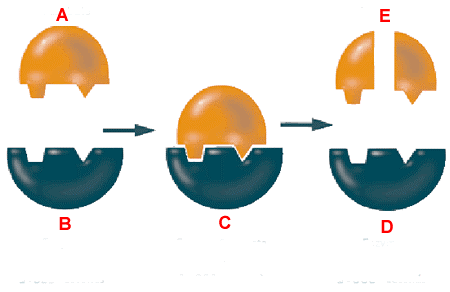
Identify Structure B
Enzyme (Before Reaction)
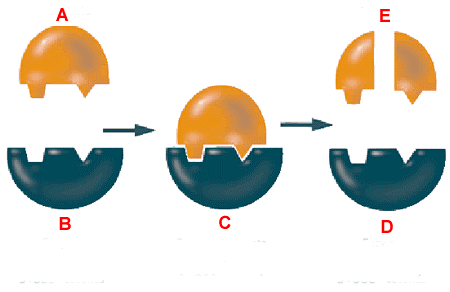
Identify Structure C
Enzyme-Substrate Complex
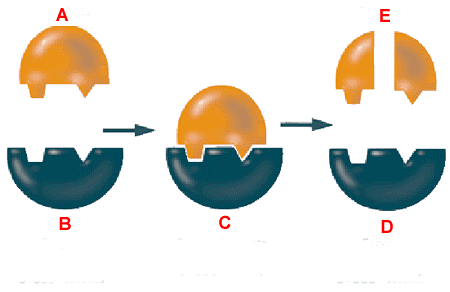
Identify Structure D
Enzyme (After Reaction)
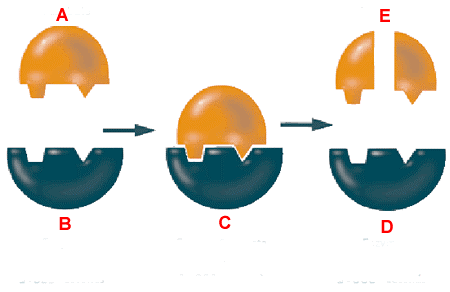
Identify Structure E
Products
What two things affect the activity of an enzyme?
Temperature and pH levels.